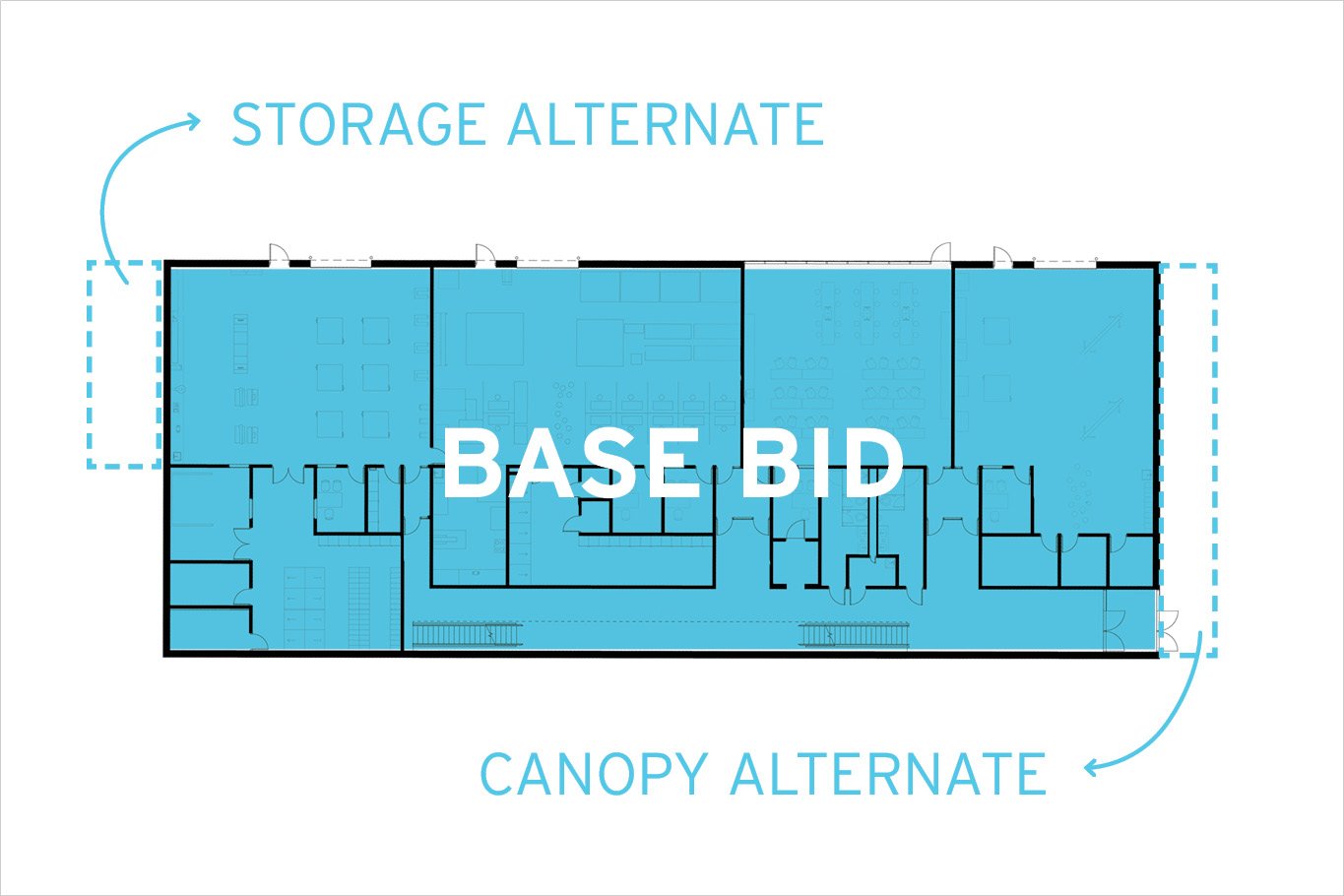Bid alternates are portions of a project that are bid separately. They help architects and building owners manage costs in a public bidding environment.
In our experience, alternates need careful planning and execution to be effective.
In this article, you will learn how to use an alternate effectively by:
- Making the scope identifiable
- Reserving alternates for “wish list” items
- Using alternates sparingly
After reading, you will feel prepared for conversations with your architect about bid alternates. You will also better understand the types of items and spaces to include in an alternate and the items best reserved for base bids.
Defining Bid Alternates
As mentioned, alternates are portions of a project that are bid separately from the base bid. Architects and building owners use them to provide a buffer when bids may come back higher than expected.
You can also use them for funding compliance. Often, grants and federal funding sources only cover a portion of a project. The agency may require you to show costs in the grant or funding agreement. To comply, you may need to show the project cost for the entire scope and how you utilized the dollars spent.
Add and Deduct Alternates
There are two types of alternates: add and deduct. With the add method, you can include the alternate in your final project if the base bid is within your desired range. Deduct alternates are initially included in the base bid, but you can remove them if bids are too high.
Although both types of alternates serve the same purpose, we recommend the add method. Deduct alternates decrease the scope of the work and can cause problems with contractors, and at the end of the day, adding to a project is far more satisfying than removing elements after bidding.
How to Effectively Use Bid Alternates
Bid alternates require careful planning. If used arbitrarily, alternates can confuse bidders and potentially lead you to lose important, functional components of your project.
Follow these three rules to keep the bid process running smoothly:
1. Make the Scope Easily Identifiable
Ideal bid alternates are standalone items that require minimal coordination between trades. The scope should be easily identifiable to reduce confusion among bidders.
Let’s look at an example to illustrate this point.
A local school district is undergoing a renovation. Due to supply chain issues, material prices have increased, and bids may be higher than initially expected.
A good bid alternate would be a standalone item like new bleachers. The bleachers are separate from the rest of the renovation and require little coordination with other trades.
A poor bid alternate would be a different mechanical system. The mechanical system is intertwined with the rest of the project. If you bid out an alternative mechanical system, your architect would need to create a separate set of contract documents and coordinate these plans with a mechanical engineer.
Ultimately, the extra coordination and design work may increase the price of professional fees. Researching mechanical systems in Design Development and including one in the base bid makes more financial sense than placing multiple options out to bid.

Standalone items like bleachers make for good alternates.
2. Make Alternates “Wish List” Items
Similarly, the most effective alternates are “wish list” items. For example, you can bid higher quality finishes as alternates. The base bid may have epoxy-painted walls in the restrooms and the bid alternate may have tile.
If the base bid is under your budget, you can choose to upgrade to tile.
In short, an alternate should never impact the function of your building or your day-to-day operations.
3. Use Alternates Sparingly
Lastly, keep alternates to a minimum. Your base bid should include all the necessary components of your project, and you should only use alternates for one or two specific items.
Too many alternates can confuse bidders and potentially create inaccurate bids. For example, one alternate could impact the cost of taking another, creating multiple pricing options.
Using alternates sparingly helps ensure the contract documents are as clear as possible and reduces the likelihood of error.
Ready to Learn More?
Planning a bid alternate is a great way to manage costs in a competitive bidding environment. They can help you address uncertainty during volatile economic conditions and comply with funding.
But arbitrary alternates can confuse bidders. Use alternates sparingly for standalone “wish list” items to keep the process running smoothly. Your project should still fulfill your overarching goals without the alternate.
Now that you better understand alternates, learn about other ways to manage costs during a building project. To learn how we operate, contact us, and schedule a call with an architect on our team.
